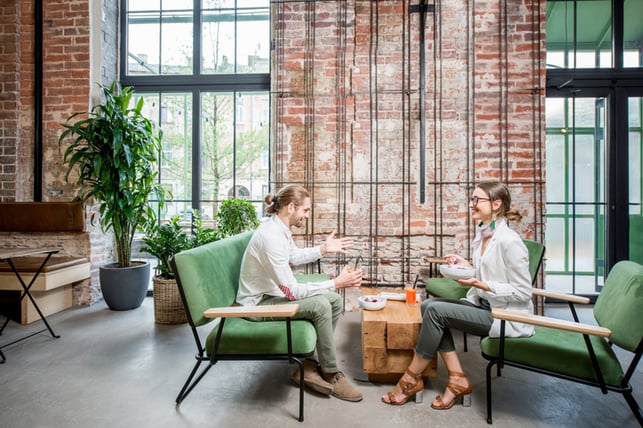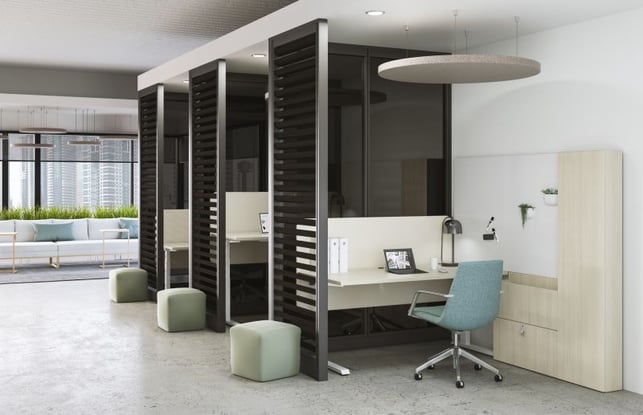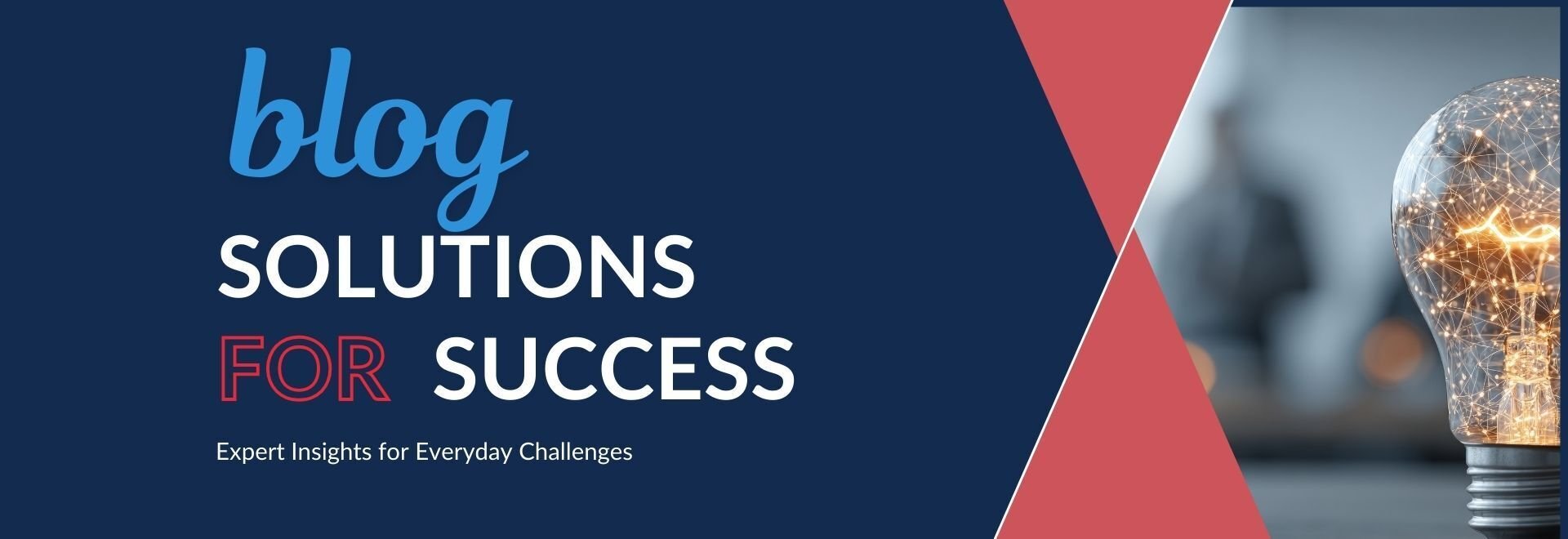
Few disruptions have reshaped the workplace as significantly as COVID-19. Case-in-point, more than 40% of employees currently work from home.
Although cutting out the daily commute and having fewer interruptions are benefits of remote work, home environments don’t always support productivity the way an agile office space design can. This is just one of many reasons why employees are eager to get back to the office.
One source cites that 75% of executives anticipate restoring at least half of on-site employee populations by July 2021.
For many, the motivation to return isn’t just about restoring some semblance of normalcy; it’s also about preserving company culture and finding ways to continue pushing operational agility.
After observing how workplace environments can influence employee productivity, the most forward-thinking organizations recognize office design as a unique opportunity.
5 Trends in Agile Office Space Design
1. Resimercial Design
According to a recent survey, the vast majority of employees (72%) are eager to return to the office. However, this doesn’t mean they won’t miss the comfort and convenience of working from home.
Resimercial design blurs the line between commercial and residential features to bring a touch of the at-home experience into the office. To achieve this type of agile office space design, strive for a balance between comfort, style and function.
Key characteristics include:
- Soft, natural, ambient lighting in place of intense fluorescent bulbs
- Home accents, such as rugs, coffee tables, lamps and classic house plants
- Comfortable furniture made of durable upholstery
- Private “nooks” and think-spaces
2. Activity-Based Workspaces
Rather than assume that one type of environment will nourish every mission and mindset, offices of the future will take an activities-first approach to enhance workspaces for specific tasks and operations.
For example — operations that require close collaboration between two or more departments might forgo stationary desks and dedicated workstations for modular office furniture and pivot spaces that can be easily reconfigured to accommodate group or independent work.
Likewise, offices will feature “focus areas” that employees can reserve for tasks requiring privacy and concentration.
In fact, the entire concept of assigned seating may become a thing of the past as employees grow accustomed to switching up their work settings to improve performance.
3. Transparent Office Design
With COVID-19 mandates still in effect and no indication of when they will end, the idea of a completely open office design is quickly coming to an ironic close.
Instead, workspaces are adopting elements of transparency that provide a sense of openness without so much exposure. Future agile office space designs will opt for glass walls in place of partitions and less restrictive workstation dividers instead of traditional cubicles or boundary-less communal workspaces.
The idea is to support physical distancing in ways that are both aesthetically appealing and conducive to collaboration.

4. More Green Offices
Many employees, particularly Millennials and Gen Z, seek organizations that stand for social responsibility.
One of the many ways companies are demonstrating their commitment to wellness, community and the environment is by incorporating more “green” elements into their office space designs, such as:
- Setting up recycling stations
- Starting an office garden
- Adopting energy-efficient lighting, heating and water fixtures
- Replacing traditional office decor with plants and “living art”
- Using environmentally-responsible cleaning products
These design elements aren’t just good for the environment — they also promote a greater feeling of well-being. Research repeatedly shows that bringing the outdoors inside can increase general levels of happiness, productivity and engagement.
5. Niche Office Experiences
Rather than attempting to create one office experience, future designs will focus on numerous niche office experiences — each uniquely designed around human needs and behaviors.
For example, after months of social isolation and Zoom calls, employees have grown more comfortable with physical distancing and video communication.
As such, we anticipate office leaders converting more office space into private conference rooms equipped with video technology.
The office reception area presents another experiential opportunity. Rather than basic seating, offices are creating lounge-style waiting areas adorned with ergonomic chairs, tables and power outlets that allow visitors to work on the go while waiting for meetings and appointments.
Ultimately, agile office space design is about assimilating with everyday life in a way that enhances human behavior to achieve desired performance outcomes. By understanding the human drivers of productivity and creating environments to support those drivers, organizations can adapt more easily to changes and evolve with greater agility over time.
Create Workspaces With Intention
Office Basics can help you design a modern, agile office space that improves collaboration and productivity. Schedule a free design consultation today.



